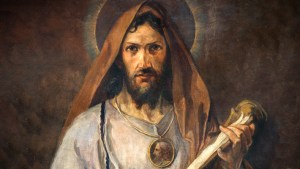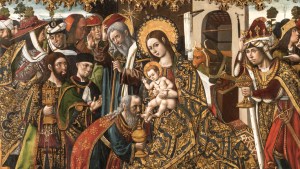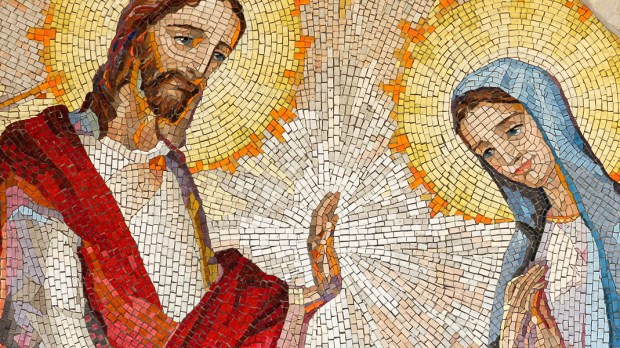“Wow,” a friend told me. “Catholics think Mary was this great figure and a perpetual virgin, but Jesus didn’t see her that way at all — and he had brothers, too!”
He told me he had heard all of this from a priest’s homily last week that really shook him up.
I knew exactly what Gospel passage he meant. It’s in the Third Chapter of Mark.
In it, Jesus is told, “Your mother and your brothers and your sisters are outside asking for you.”
Jesus doesn’t jump up to welcome them in. Instead, he says, “‘Who are my mother and my brothers?’ And looking around at those seated in the circle he said, ‘Here are my mother and my brothers. For whoever does the will of God is my brother and sister and mother.’”
When I asked more about what the homilist said, it didn’t seem that it had included any serious error — just a lack of needed information and emphasis.
Once you know all the facts, this is actually a great story about Marian piety, I told my friend.
The fact is, nobody in the early Church would have been bothered by this passage at all, because they knew a few key things we don’t.
They knew that the word for “brothers” was sometimes also used for cousins, as can be seen in several Old Testament passages. And they knew exactly who the “brothers of Jesus” were. As mentioned in the Gospel of Mark they include two figures, James and Joseph (or “Joses”), who were well known as leaders in the Early Church. In several places Mark identifies them as the children of another woman named Mary, whom Matthew calls “the other Mary” — very likely the woman John identifies as “Mary, the wife of Clopas.”
In his book Jesus and the Jewish roots of Mary, Brant Pitre shares information from the Church History that Eusebius published in the year 313. Eusebius reports that James became known as “James the Just” and mentions that, since Clopas was a brother of St. Joseph, James is the cousin of Jesus.

Read more:
Was St. Jude the one getting married in Cana?
Once you know that, you just need to put this story in context.
As we know, Mary is highly regarded in the New Testament. The angel Gabriel calls her “full of grace”; Elizabeth calls her “blessed among women” and “the Mother of my Lord.” When Jesus is presented in the Temple, Simeon gives her a personal prophecy, and Jesus performs his first public miracle at in Cana at his mother’s prompting.
So Mary is at the very center of Jesus’ story in the Gospels.
This brings us to the third Chapter of Mark. The chapter begins with Jesus throwing himself fully into his mission: He gets mobbed by people wanting cures or exorcism, he gathers 12 Apostles who must have seemed like a strange group, then he returns home, where he is mobbed again.
That’s when the trouble with his family starts. Mark explains: “When his relatives heard of this, they set out to seize him, for they said, ‘He is out of his mind.’” The chapter continues with religious figures suggesting Jesus is himself possessed.
So you can imagine what has happened. His relatives, which surely included his “brothers,” are spooked by what they are seeing. So Mary takes the situation in hand.
One thing you learn about Mary is that she is very direct with God, and very direct about how we should deal with her son.
When the angel tells her she is going to bear a son, she answers, “How can this be, since I have no relations with a man?” When she finds Jesus in the Temple after losing him for days, she says, “Son, why have you done this to us?”
As well, she tells her cousin Elizabeth all about the mighty power of her son, and she tells the servants at Cana, “Do whatever he tells you.”
So, when his relatives have doubts about Jesus, Mary takes them directly to Jesus. In this case, Jesus’ advice is very much like Mary’s favorite advice: Do God’s will. “Whoever does the will of God is my brother, and sister, and mother,” says Jesus.
And this is exactly what Jesus’ family seems to have done.
The mother of his “brothers” is there at the Passion, and again at the Resurrection. Next, they are there waiting for the Holy Spirit. The Book of Acts lists those who “with one accord devoted themselves to prayer, together with the women and Mary the mother of Jesus, and with his brethren.”
So when the relatives of Jesus doubted him, Mary took them directly to her son. Jesus taught them that obedience — not their family connection — was the center of their relationship. They did what he told them and became the inner circle of the new Church, then some of its first martyrs.
And so, yes, Jesus thought his mother was pretty special, I told my friend. And although he was an only child, he doesn’t want to be one anymore. He wants you as his brother — and her son — too.

Read more:
If you want to love Mary more, find her in the Old Testament (this book will guide you)

